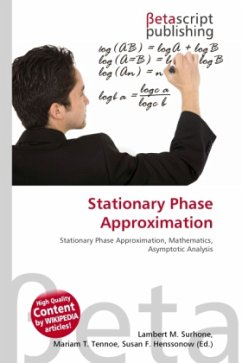Please note that the content of this book primarily consists of articles available from Wikipedia or other free sources online. The Stationary wavelet transform (SWT) is a wavelet transform algorithm designed to overcome the lack of translation-invariance of the discrete wavelet transform (DWT). Translation-invariance is achieved by removing the downsamplers and upsamplers in the DWT and upsampling the filter coefficients by a factor of 2(j 1) in the jth level of the algorithm. The SWT is an inherently redundant scheme as the output of each level of SWT contains the same number of samples as the input so for a decomposition of N levels there is a redundancy of N in the wavelet coefficients. This algorithm is more famously known as "algorithme à trous" in French (word trous means holes in English) what refers to inserting zeros in the filters. It was introduced by Holdschneider et al.
Bitte wählen Sie Ihr Anliegen aus.
Rechnungen
Retourenschein anfordern
Bestellstatus
Storno








